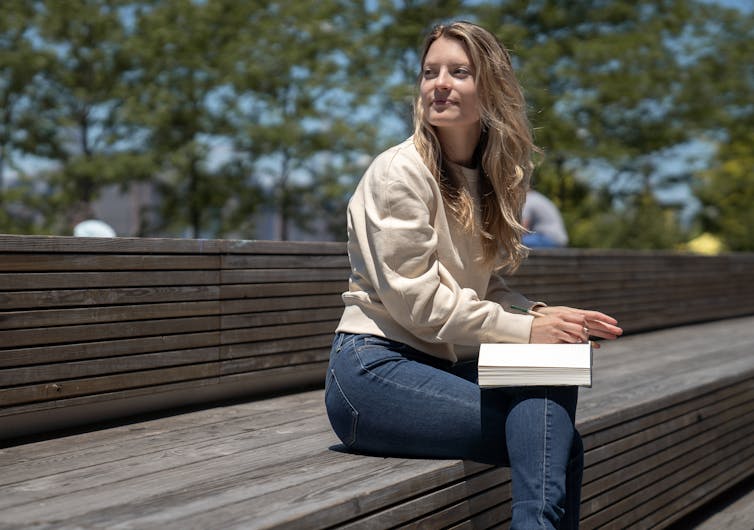Health
Should I be getting my vitamin D levels checked?
Australia has seen a surge in vitamin D testing of children, with similar trends reported for adults around the world. GPs are now being urged not to test for vitamin D unnecessarily.
So when is low vitamin D a potential concern? And when might you need to get your levels tested?
How much vitamin D do we need?
Vitamin D is not only a nutrient – when metabolised in the body it acts as a hormone. We have receptors for this hormone all around our body and it helps regulate the metabolism of calcium and phosphorus.
Vitamin D also has many other roles, including helping our immune defences and contributing to DNA repair and cell differentiation.
We can thank the sun for most of our vitamin D. A chemical in our skin called 7-dehydrocholesterol is converted to vitamin D after contact with UVB radiation from the sun.
While we get some vitamin D also through our diet, this makes a relatively small contribution. It’s difficult to get much more than one-third of our daily vitamin D requirement from diet without supplementation.
Nutritional vitamin D status is typically measured via a blood test. This checks the calcidiol (calcifediol, 25-hydroxyvitamin D) concentrations, which reflect the average intakes from the sun and diet over the past three to four weeks.
The current recommendation is that we should all aim to have at least 50nmol/L (20ng/mL) at the end of winter.
However, one problem with vitamin D tests is that there is variation in measured concentrations between the laboratories and between the assays, and whether you’re deemed to have a deficiency can depend on the testing method used.

We get most of our vitamin D from sunshine. Pexels/Asim Alnamat
Doctors do not always agree with what is deficiency. While very low concentrations are likely to prompt doctors to recommend a supplement (and, potentially, follow-up testing), some may consider even relatively high concentrations as inadequate.
This is all understandable as research in this space is still evolving, and we know low concentrations do not always cause any symptoms.
Why avoid vitamin D deficiency?
Prolonged, severe vitamin D deficiency will lead to softening of bone tissue and cause diseases such as rickets (children) and osteomalacia (adults).
However, avoiding low concentrations is likely to be good for many aspects of health, with consistent evidence suggesting benefits for infectious diseases and autoimmune conditions such as multiple sclerosis.
Randomised trials have also provided evidence for lower cancer and all cause mortality by daily supplementation, although any benefit is likely to be restricted to those who otherwise have insufficient intakes.
Who is at risk of deficiency?
Most of us do not need tests to have a relatively good idea whether we might be at risk of a clinically important deficiency.
If it’s not late winter, we spend regularly at least some time outside with skin exposed to the sun, and we do not belong to a specific high-risk group, it is unlikely that our levels would be very low.
The two main reasons for vitamin D deficiency typically relate to:
1. not getting (enough) vitamin D through sun exposure. Deficiency risk can be high for anyone who is housebound, such as older or disabled people in residential care. The risk of deficiency increases if we always cover our skin carefully by modest cultural dress, and also dark skin pigmentation is known to reduce vitamin D synthesis.
2. having a chronic disease that alters your requirement. Medications such as anticonvulsants used to treat epilepsy, and conditions such as liver and kidney diseases can interfere with vitamin D metabolism. Some digestive diseases can reduce vitamin D absorption from your diet, while obesity will increase your vitamin D requirement and make it more difficult to raise your blood levels.
Am I getting enough sun exposure?
In Australia, it is possible to get enough vitamin D from the sun throughout the year. This isn’t so for many people living in the northern hemisphere.
For those who live in the top half of Australia – and for all of us during summer – we only need to have skin exposed to the sun a few minutes on most days.
The body can only produce a certain amount of vitamin D at the time, so staying in the sun any longer than needed is not going to help increase your vitamin D levels, while it will increase your risk of skin cancer.
During winter, catching enough sun can be difficult, especially if you spend your days confined indoors. Typically, the required exposure increases to two to three hours per week in winter. This is because sunlight exposure can only help produce vitamin D if the UVB rays reach us at the correct angle. So in winter we should regularly spend time outside in the middle of the day to get our dose of vitamin D.
If you are concerned, you have very dark skin, or are otherwise in a high-risk group, you may want to talk to your GP.
In any case, taking a modest daily dose of vitamin D (1,000-2,000 IU) during the darker winter months is unlikely to cause harm and it may be beneficial.
Why does excess vitamin D testing matter?
When not indicated, testing can cause unnecessary worry and promote a cascade of laboratory, prescription and imaging services that are of low value.
Excessive testing is also a waste of health-care resources, with one single test costing about the same as a years’ worth of vitamin D supplementation.
Very often, we can make relatively small changes to our lifestyles to reduce the risks of vitamin D deficiency. ![]()
Elina Hypponen, Professor of Nutritional and Genetic Epidemiology, University of South Australia
This article is republished from The Conversation under a Creative Commons license. Read the original article.






















